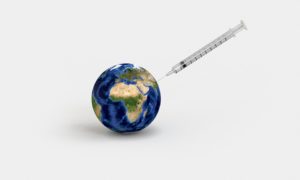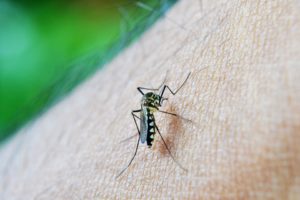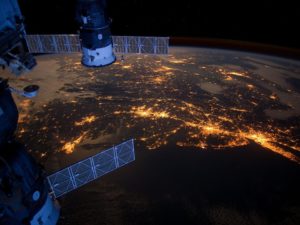
Hollywood films and TV programs have somewhat glamorized and perhaps even trivialized the impact of disease outbreaks, often implying a simple serum put together in the space of the film could cure all cases of a disease. In reality, infectious diseases such as malaria, bubonic plague and flu have beleaguered humanity all through our history, stretching the resources of often the poorest regions and are certainly not so easy to contain or cure.
 In this modern age, with medical advances and technology, we would expect to be seeing a decrease in disease outbreaks. Indeed elimination programs, better public understanding of diseases, vaccination programs and antibiotic usage have all helped in containing and combating infectious diseases. However, unlooked for factors such as climate change, increased national and international travel, conflict, migration, the emergence of drug resistance and societal attitudes towards vaccination have seriously undermined the positive steps taken to reduce the prevalence of infectious diseases.
In this modern age, with medical advances and technology, we would expect to be seeing a decrease in disease outbreaks. Indeed elimination programs, better public understanding of diseases, vaccination programs and antibiotic usage have all helped in containing and combating infectious diseases. However, unlooked for factors such as climate change, increased national and international travel, conflict, migration, the emergence of drug resistance and societal attitudes towards vaccination have seriously undermined the positive steps taken to reduce the prevalence of infectious diseases.
However, despite being risk factors for potential outbreaks, these factors can also act as proxies for predicting outbreaks.
 This month, as officials warned of dengue outbreaks in Mexico, Cuba and Indonesia, not to mention an epidemic in Reunion, Rachel Lowe and colleagues published their model linking the impact of climate to the risk of dengue outbreaks. To build their model, they looked at climate factors such as drought and rainfall in the months leading up to dengue outbreaks in Barbados between 1999 and 2016. They found that dengue outbreaks were more likely to occur 4 – 5 months after periods of drought or 1 month after excessive rainfall.
This month, as officials warned of dengue outbreaks in Mexico, Cuba and Indonesia, not to mention an epidemic in Reunion, Rachel Lowe and colleagues published their model linking the impact of climate to the risk of dengue outbreaks. To build their model, they looked at climate factors such as drought and rainfall in the months leading up to dengue outbreaks in Barbados between 1999 and 2016. They found that dengue outbreaks were more likely to occur 4 – 5 months after periods of drought or 1 month after excessive rainfall.
Data clearly plays a big part in predicting outbreaks, and technology can help generate, collate, process and analyze data. NASA has used satellite-obtained data of air temperature, precipitation, availability of WASH infrastructure (water, sanitation and hygiene), population density and severity of natural disaster in their GCRM model to predict potential cholera outbreaks.
 Satellite data is very useful, but NASA is also turning to citizen scientists to help improve its prediction models of mosquito-borne diseases. Members of the public can get involved by downloading the Globe Observer App, and inputting mosquito locations via the Mosquito Habitat Mapper tool. Information from citizen scientist could fill in the gaps in NASA’s data on the geographic distribution of mosquitoes and time-variation in their populations.
Satellite data is very useful, but NASA is also turning to citizen scientists to help improve its prediction models of mosquito-borne diseases. Members of the public can get involved by downloading the Globe Observer App, and inputting mosquito locations via the Mosquito Habitat Mapper tool. Information from citizen scientist could fill in the gaps in NASA’s data on the geographic distribution of mosquitoes and time-variation in their populations.
Yet, climatic variations are not the only risk factors contributing to disease outbreaks:
- The emergence of antimicrobial resistant pathogens is alarming, since antimicrobials play a vital part in combating infectious diseases – the Chief Medical Officer of England has warned of an ‘antibiotic apocalypse’.
- In June 2018, the BBC reported an outbreak of measles in Bristol, which has been partly blamed on the reluctance of people to get the MMR vaccination.
- War and migration (which could be due to conflict, climatic conditions or economically driven) contribute to the spread of infectious diseases.
- The big jump – there is the constant risk of pathogens crossing over from animals to humans and vice versa, resulting in outbreaks and pandemics. Examples of this are the current AIDS pandemic, Influenza outbreaks, and the cross-over of primate malaria parasites to humans.
A tall order
A good predictive model then must incorporate a vast array of factors (including the ones discussed in this article) in order to accurately predict what, when and where the next outbreak, epidemic or pandemic would be. It would be a complex model, requiring data from various sources and collaboration between many different parties. It is no wonder that outbreaks are so hard to predict. Yet, scientists and citizens alike are clearly taking on the challenge.

Comments